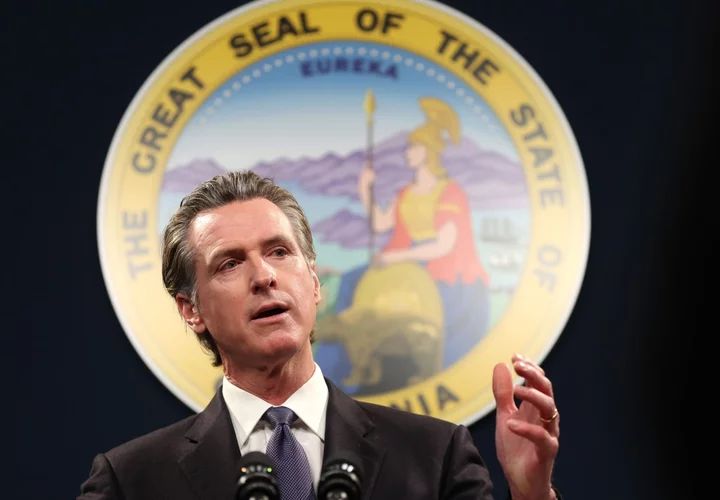California is facing a deeper deficit than projected at the beginning of the year as the fortunes of its wealthiest residents wane, worsening the fiscal situation of a state already struggling with tech layoffs and banking upheaval.
For the first time since California Governor Gavin Newsom took office in 2018, the state’s budget will swing into deficit, which he projected at $32 billion for the fiscal year starting July 1.
The hole is $9.3 billion bigger than Newsom forecast in January, reflecting the effects of rising interest rates, sagging stock markets and tech layoffs on its wealthiest taxpayers. It’s a sharp turnaround from the previous budget cycle’s nearly $100 billion surplus as the state reaped the benefits of headier economic times.
The expected shortfall is a hurdle for the second-term Democrat, who has been traveling to Republican-led states contrasting his commitment to liberal priorities over green energy, subsidized childcare, and social issues, such as abortion access and gun control.
Newsom on Friday sought to assure lawmakers and constituents that his policy agenda will continue to be funded, despite the worsening fiscal outlook. He cited a variety of options to help cover the shortfall, including delaying and reducing spending — including tapping unused funds from prior years — and withdrawing money from the state’s safety net reserve.
Revenue has been hurt by the sinking fortunes of California’s wealthiest residents, who shoulder a disproportionate share of the tax burden. Roughly half of the state’s personal income taxes coming from the top 1% of earners.
Personal income tax wage withholding receipts in the 2023-24 are projected to be $6.7 billion lower what was expected in January.
Thousands of workers have been laid off from California-based tech giants including Alphabet Inc., Meta Platforms Inc. and Twitter. The collapse of Silicon Valley Bank, which mainly catered to the tech and venture capital sectors, along with two other California-based regional lenders earlier this year adds to the economic turbulence.
Friday’s deficit forecast has an extra layer of uncertainty as tax payment and filing deadlines have been extended by six months until Oct. 16 in most California counties, due to severe winter storms earlier this year.
When Newsom presented his preliminary spending plan earlier this year, he said the emerging deficit would not hinder his plans for “transformative investments” in the housing, education, childcare, health care and climate programs at the center of his second-term agenda.
Safety Net
The budget Newsom released Friday outlined billions of dollars in additional cuts to education programs, including arts education and vocation training, as well as public transit.
He also proposed withdrawing $450 million from the state’s safety net reserve, about half the money available, in order to reduce the need for cuts to spending on homeless programs, mental health and substance abuse treatment, health care, and other social programs that he said are critical for the state.
The governor and legislative leaders, all Democrats, face tough negotiations over potential pending cuts to many of those popular programs. Legislators are required by law to pass a budget by June 15 or forfeit their pay for each day they are late.
Some lawmakers are pushing Newsom to stave off budget cuts by tapping more of the state’s $37.2 billion state reserve fund, calls Newsom rejected on Friday.
“We are walking into a budget season where we need to maintain prudence,” he said, warning that a recession could worsen the fiscal situation in coming years.
The deficit is also setting up a showdown between Newsom and Democratic leaders in the legislature over increasing tax rates on large corporations. Newsom says he doesn’t want to take any actions that would make California less competitive with other states trying to attract employers.
Senate President pro Tempore Toni Atkins said a corporate tax hike is a prudent option to protect funding for popular programs such as subsidized childcare. “We’re trying to balance all of the needs without bending and preserving that reserve,” she said in an interview with Bloomberg.
--With assistance from Romy Varghese.

